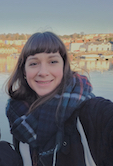
CHEYNEL Louise Post-doc UCBL
Post-doctorant : E2C
Université Lyon 1
CNRS, UMR 5023 - LEHNA,
Laboratoire d'Ecologie des Hydrosystèmes Naturels et Anthropisés
3, rue Raphaël Dubois - Bât. Darwin C
F-69622 Villeurbanne Cedex FRANCE
-
Cette adresse e-mail est protégée contre les robots spammeurs. Vous devez activer le JavaScript pour la visualiser.


Voir l'article publié dans l'Obs sur la thématique One Health (pdf ci dessus).
Mon travail de recherche en écologie / éco-immunologie est centré autour de la santé de la faune sauvage, et cherche à comprendre :
(i) comment le phénotype immunitaire des individus est influencé à la fois par leurs caractéristiques individuelles (âge, sexe, génétique…) et les facteurs environnementaux (naturels & anthropiques) ;
(ii) l’influence de ce phénotype immunitaire sur les communautés bactériennes commensales et les pathogènes de l’hôte ;
(iii) et finalement, les relations entre le phénotype immunitaire, infectieux et les traits d'histoire de vie des espèces en milieu naturel.
Mon travail n'est pas centré autour d’un modèle animal en particulier puisque j'ai travaillé sur différentes espèces de mammifères (chevreuils, souris), d’amphibiens (rainettes, crapauds communs) et de crustacés (Proasellus, Asellus).
Depuis 2022, je suis chercheuse postdoctorante au LEHNA, Université Lyon 1 où je travaille sur les effets de la lumière artificielle nocturne sur l'immunité et le microbiote du crapaud commun.
Je suis aussi toujours affiliée à l’Institute of Infection, Veterinary and Ecological Sciences, University of Liverpool, avec qui je travaille sur les relations entre l'immunité et le microbiome intestinal chez les souris vivant en milieu naturel.
Enfin je suis également membre du groupe "Parasites & Pathogènes" de la British Ecological Society pour lequel j’écris une newsletter mensuelle, et membre du nouveau réseau EDGE (communauté d'écologues axée sur les questions relatives au genre).
Site personnel: https://cheynellouise.wixsite.com/louisecheynel-1
Twitter: @Louise_CheynelI’m an ecologist / eco-immunologist working on wildlife health. My research seeks to understand:
- how immune phenotype is driven by both individual characteristics (age, sex, genetics…) and environmental factors (natural & anthropic) ;
- how this influences hosts’ commensal microbial and pathogens communities ;
- and ultimately, the relationships between immune, infectious phenotype and life-history traits in the wild.
My work is not centered around an animal model, I worked on natural populations of mammals (roe deer, house mice), amphibians (tree frogs, common toads) and crustaceans (Proasellus, Asellus).
Since 2022, I’m a Postdoctoral Research Associate at the LEHNA, Université Lyon 1 working on the effect of Artificial Light At Night on common toads’ immunity and microbiome.
I’m still in an Honorary Association with the Institute of Infection, Veterinary and Ecological Sciences, University of Liverpool working on relationships between immunity and gut microbiome in wild house mice.
I’m also Newsletter Editor in the Special Interest Group “Parasites & Pathogens” at the British Ecological Society, and Committee Member in the new EDGE network (community of ecologists focused on issues pertaining to gender).
Personal website: https://cheynellouise.wixsite.com/louisecheynel-1
Twitter: @Louise_Cheynel
- 2024 Herrada, A., Vuarin, P., Débias, F., Gache, A., Veber, P., [...], Cheynel, L., [...], Rey, B., 2024 - Haemolysis overestimates plasma oxidative stress biomarkers in free-ranging roe deer. Comparative Biochemistry and Physiology - Part A: Molecular and Integrative Physiology, 298, pp.111750. ⟨10.1016/j.cbpa.2024.111750⟩2024 Lalande, L.D., Bourgoin, G., Carbillet, J., Cheynel, L., [...], Gilot-Fromont, E., 2024 - Early-life glucocorticoids accelerate lymphocyte count senescence in roe deer. General and Comparative Endocrinology, 357, pp.114595. ⟨10.1016/j.ygcen.2024.114595⟩2023 Viney, M., Cheynel, L., 2023 - Gut immune responses and evolution of the gut microbiome—a hypothesis. Discovery Immunology, 2 (1) 1-9. ⟨10.1093/discim/kyad025⟩. ⟨hal-04882100⟩
Sous presse
L. Cheynel, L. Lazarou, E. Riley & M. Viney. Immunogenetics and infection phenotype in natural populations of house mice. In review in Molecular Ecology.
2021
- L. Cheynel, E. Gilot‐Fromont, B. Rey, E. Quéméré, F. Débias, J. Duhayer, S. Pardonnet, M. Pellerin, J- M. Gaillard & J-F. Lemaître (2021). Maternal effects shape offspring physiological condition but do not senesce in a wild mammal. Journal of Evolutionary Biology, 34: 661-670.
- J-F. Lemaître, J. Carbillet, B. Rey, R. Palme, H. Froy, R.V. Wilbourn, S.L. Underwood, L. Cheynel, J-M. Gaillard, A.J.M. Hewison, H. Verheyden, F. Débias, J. Duhayer, C. Régis, S. Pardonnet, M. Pellerin, D.H. Nussey & E. Gilot-Fromont (2021). Short-term telomere dynamics is associated with glucocorticoid levels in wild populations of roe deer. Comparative Biochemistry and Physiology Part A: Molecular & Integrative Physiology, 252, 110836.
2020
- J-F. Lemaître, L. Cheynel, M. Douhard, V. Ronget & J-M. Gaillard (2020) Trade-offs. In: Rattan, S.I.S. (Ed.), Encyclopedia of Biomedical Gerontology. Elsevier. vol. 3, Academic Press, pp. 367–375.
2019
- L. Cheynel, F. Douhard, E. Gilot-Fromont, B. Rey, F. Débias, S. Pardonnet, J. Carbillet, H. Verheyden, A.J.M. Hewison, M. Pellerin, J-M. Gaillard & J-F. Lemaître (2019) Does body growth impair immune function in a large herbivore? Oecologia, DOI: 10.1007/s00442-018-4310-4.
2018
- L. Cheynel, Thesis: Age-specific relationships between immunity and life-history traits in a wild mammal. Ecology, environment. Université de Lyon, 2018. English. ⟨NNT : 2018LYSE1273⟩.
- J-F. Lemaître, L. Cheynel, F. Douhard, G. Bourgoin, F. Débias, H. Ferté, E. Gilot-Fromont, S. Pardonnet, M. Pellerin, B. Rey, C. Vanpé, M. Hewison & J-M. Gaillard (2018) The influence of early-life allocation to antlers on male performance during adulthood: evidence from contrasted population of a large herbivore. Journal of Animal Ecology, 87:921–932.
2017
- L. Cheynel, J-F. Lemaître, J-M. Gaillard, B. Rey, G. Bourgoin, H. Ferté, M. Jégo, F. Débias, M. Pellerin, L. Jacob & E. Gilot-Fromont (2017) Immunosenescence patterns differ between populations but not between sexes in a long-lived mammal. Scientific Reports, 7: 13700.
- R.V. Wilbourn, H. Froy, M.-C. McManus, L. Cheynel, J.-M. Gaillard, E. Gilot-Fromont, C. Regis, B. Rey, M. Pellerin, J.-F. Lemaître & D.H. Nussey (2017) Age-dependent associations between telomere length and environmental conditions in roe deer. Biology Letters, 13(9):20170434.































